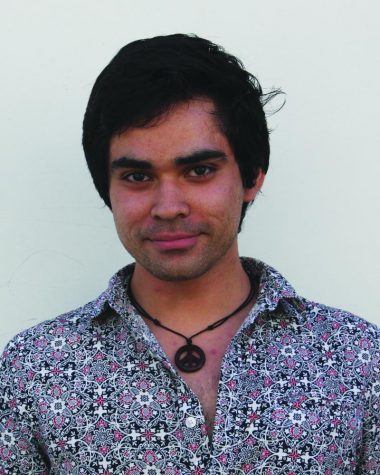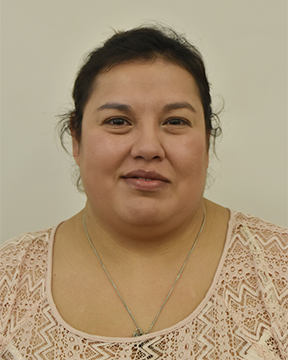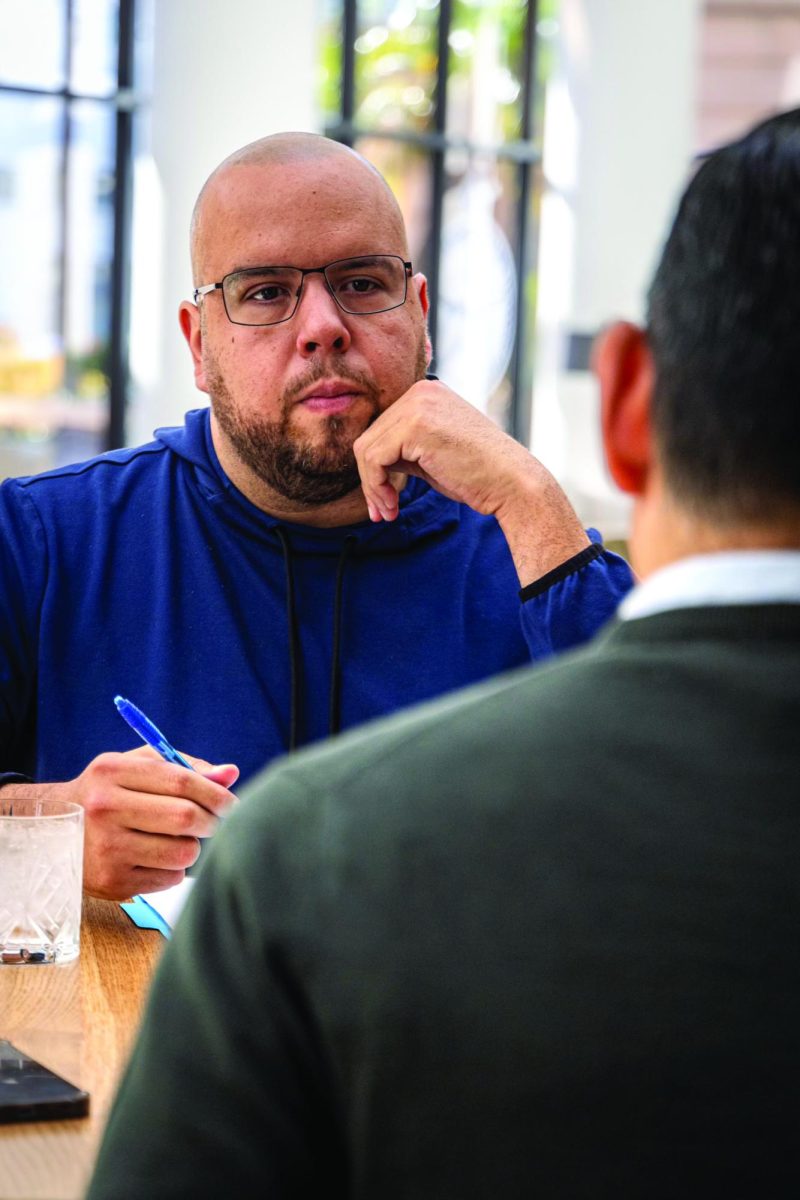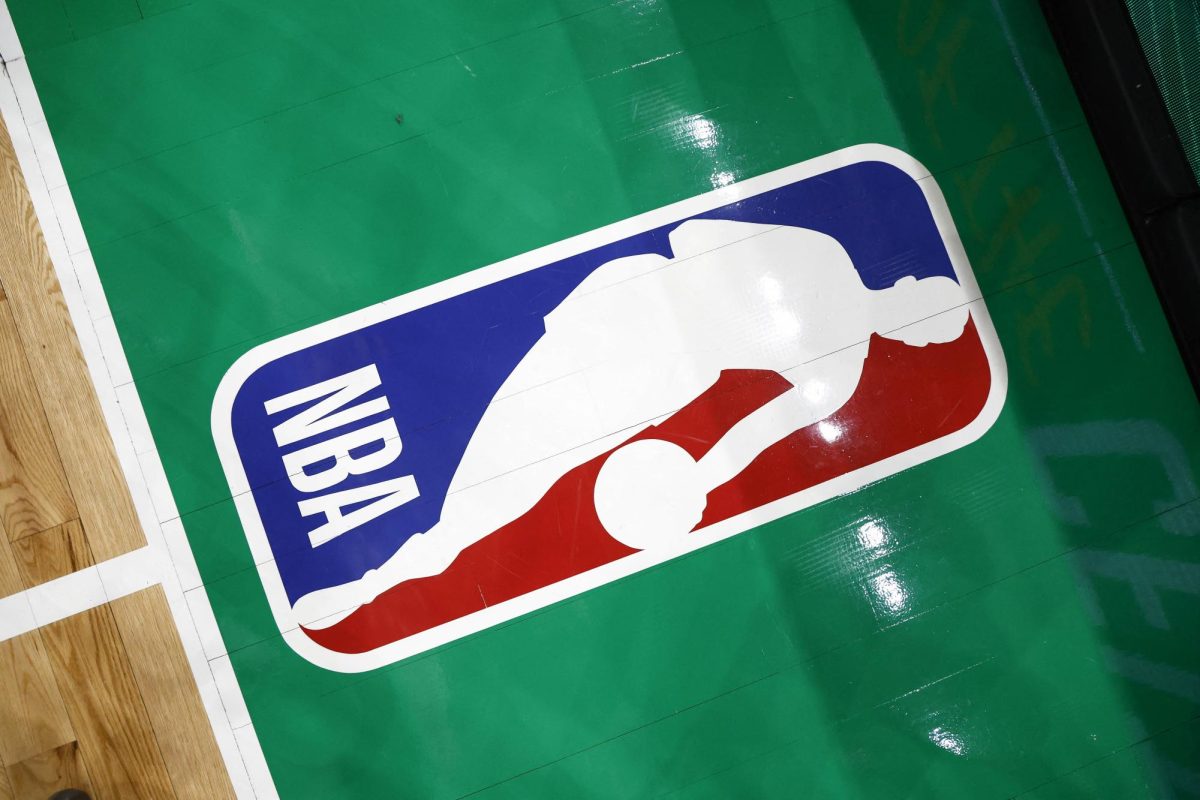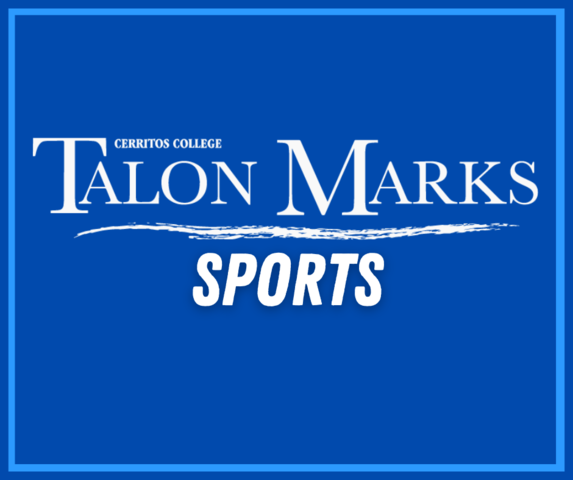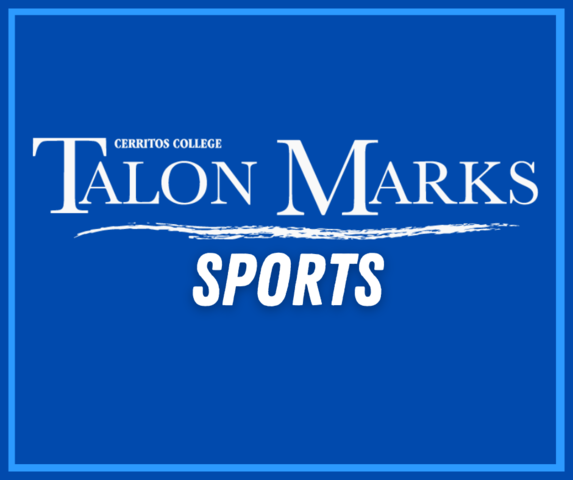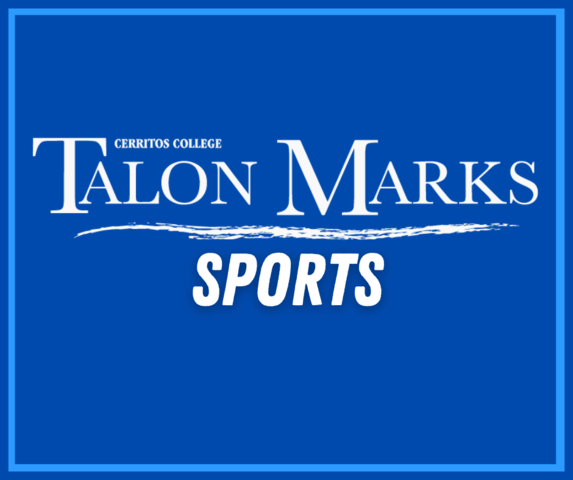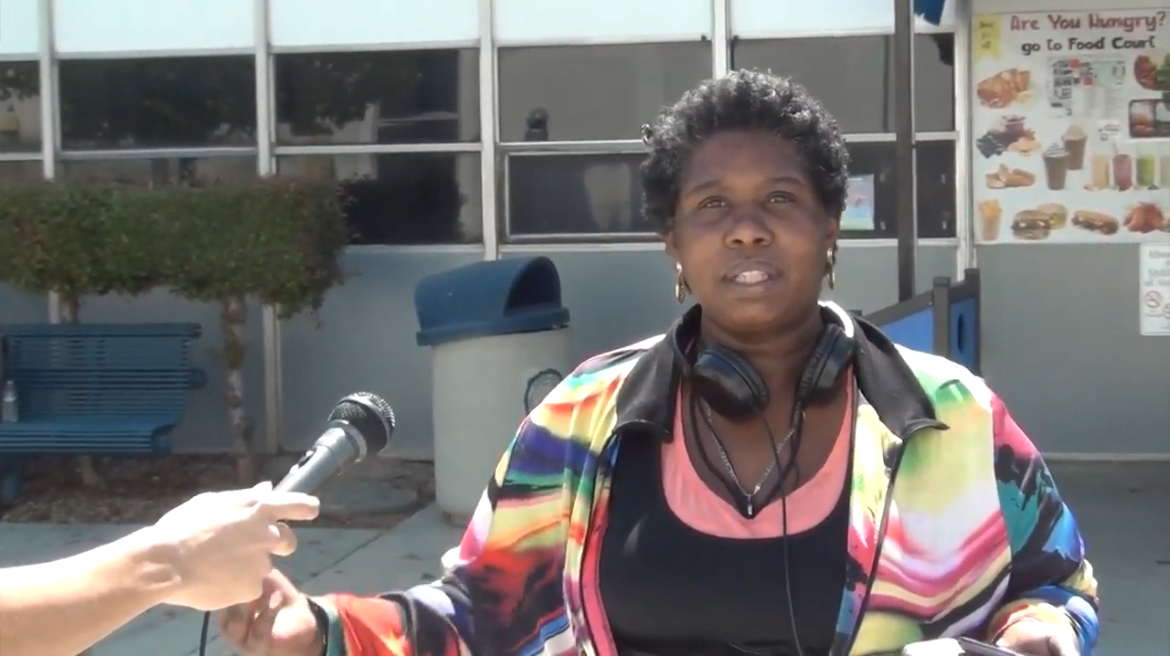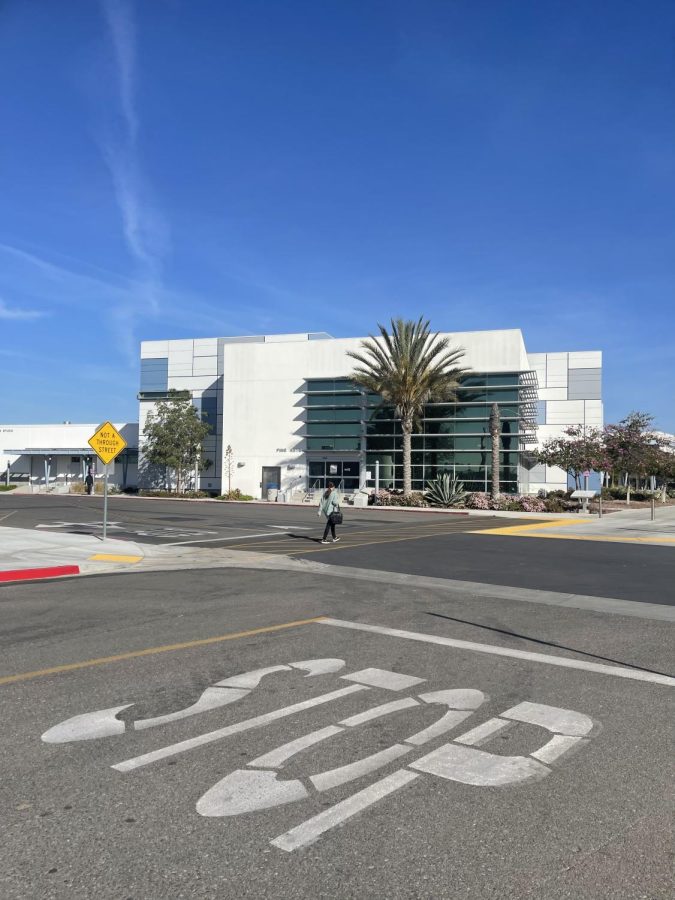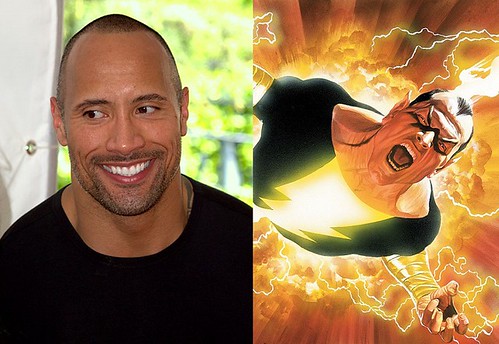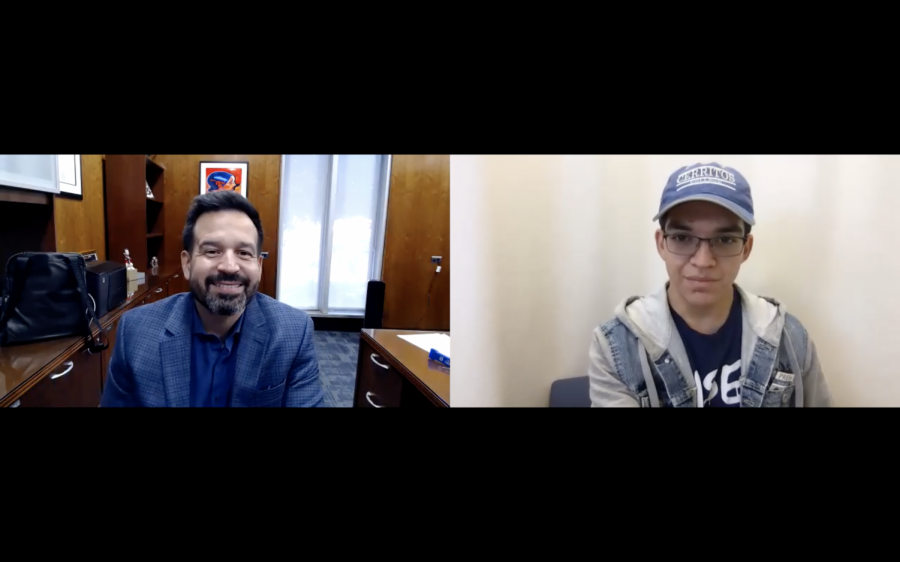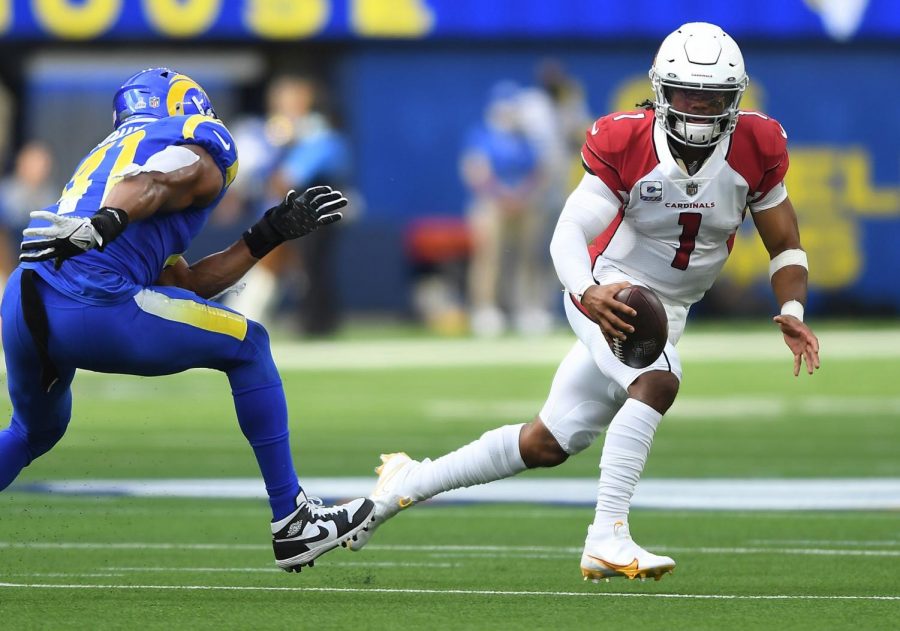Valeria Jaramillo tells the student body of Cerritos College of her experiences at the opening ceremony for the Fall 2016 STEM open house at a Q and A.
Valeria Jaramillo: I’m a geology major. I used to be a business major, but after taking one geology class it just changed my mind and i knew that’s what I wanted to do.
Connie Bordman (Dean of SEM and Project Director of HSI): I’d like to introduce Dr. Fierro, the president of Cerritos Community College and welcome you to our open house this afternoon.
Dr. Jose Fierro: Good morning, thank you for the invitation here today. I had the opportunity yesterday to go over the different project presentations. I was just telling Connie, the only downside of the projects is that as I was walking by – some things will resonate, I have a background in science and I used to teach science; but they were so above my head that I was just nodding like ‘That sounds great.’ Because the level of detail and the level of (depth) that every single student went into when they were explaining their posters was amazing. So, great job our faculty and our staff for the support that you have provided our students because it clearly shows the level of teaching and the level of education that we are providing at Cerritos College. So, thank you for that; and for you students, job well done – because it definitely shows hat you are learning and going above and beyond to succeed in your careers. I’m sure what we’re going to see today on our research presentation is going to be great. So without further ado, the stage is all yours.
Question: What advice do you have for women in science?
Jaramillo: It’s definitely a tough field. There’s not a lot of women out here, but I definitely encourage it. It’s amazing, it’s really rewarding – everything that we get to do; and there’s a lot of help out there for us because we are a minority and I would definitely recommend it.
Bordman: I would like to introduce Valeria Jaramillo to you. Valeria participated in a very competitive process to be selected as a student to participate with the Natural History Museum in LA with dinosaur research this semester. I’m gonna give you a little bit of background Proyecto Dinosaurios, this project was to create awareness about the professional possibilities within the geosciences and encourage students to majors and graduate programs in paleontology or other disciplines within earth science. The project provides a summer of hands on experience in most aspects of paleontology and (as I mentioned before) it’s a very competitive process and we’re very proud that Valeria was selected to participate in the research. Originally a business major, she changed her major to geology while here at Cerritos and she’s planning to apply to USC, UCLA, Pen State, and Cal State Long Beach where she’ll be transferring next fall in geology.
Question: Did you actually bring fossilized bones back to the museum?
Jaramillo: We didn’t actually get to do it. When we were there it was basically the beginning. They were there for a whole month. We were only there for twelve days. So we kinda helped with the cleanup process and finding more bones, but it wasn’t until afterwards that they excavated more and took them out. So they brought them back, but we were able to bring some back.
Board of Trustees member Bob Arthur: Thank you for your presentation. It was very interesting and very well done. Your fossilized materials eventually develop into petroleum products that are excavated from the ground and processed into a wide array of products from gasoline in our cars to plastic bottles; and the toy manufacturing industry makes a boatload of money selling dinosaur products to little kids; so in actuality when we buy dinosaur products and give them to our children and grandchildren, they’re truly playing with dinosaurs. Correct?
Jaramillo: I’m not really sure.
Question: You said you had OCD?
Jaramillo: Oh no! I guess apparently, maybe a little bit, just because we were separating and they gave us little, tiny fossils; and I ended up separating them by how they look and feel, so that’s the only thing.
Question: How do you tell the difference between a fossil and a rock because you were working on a site where there was just pure rocks and I could not tell where any of the fossils were when you showed us the landscape of a fossil that was still there from eight years. I couldn’t tell.
Jaramillo: It’s hard because all the minerals in the rock, they seeped into the fossil; but once you get close up and you’re actually working there, so you have to be very careful; and you can tel because it’s a different texture once yo reach the fossil. It’s a different texture, you can kinda see the imprint of the skin versus sediment. So if you’re at the beach and you have sand and you come across a shell you’re able to tell that it’s a little bit different, so it’s kinda like that.
Question: Do you have anything else to say?
Jaramillo: I would like to take this opportunity to thank everyone; thank all the professors for sharing this information with us. Had I not known about this internship I would have never gone. So, if you do get professors that send information to you about internships or about jobs or just different experiences, I would take them.



